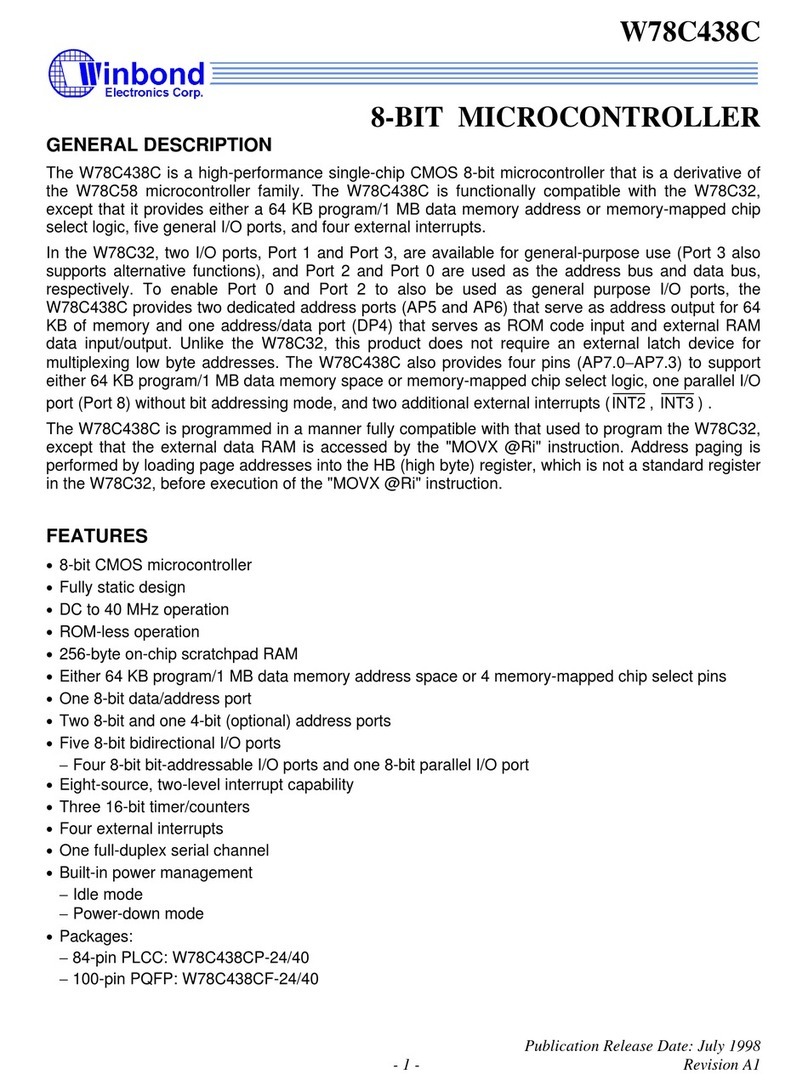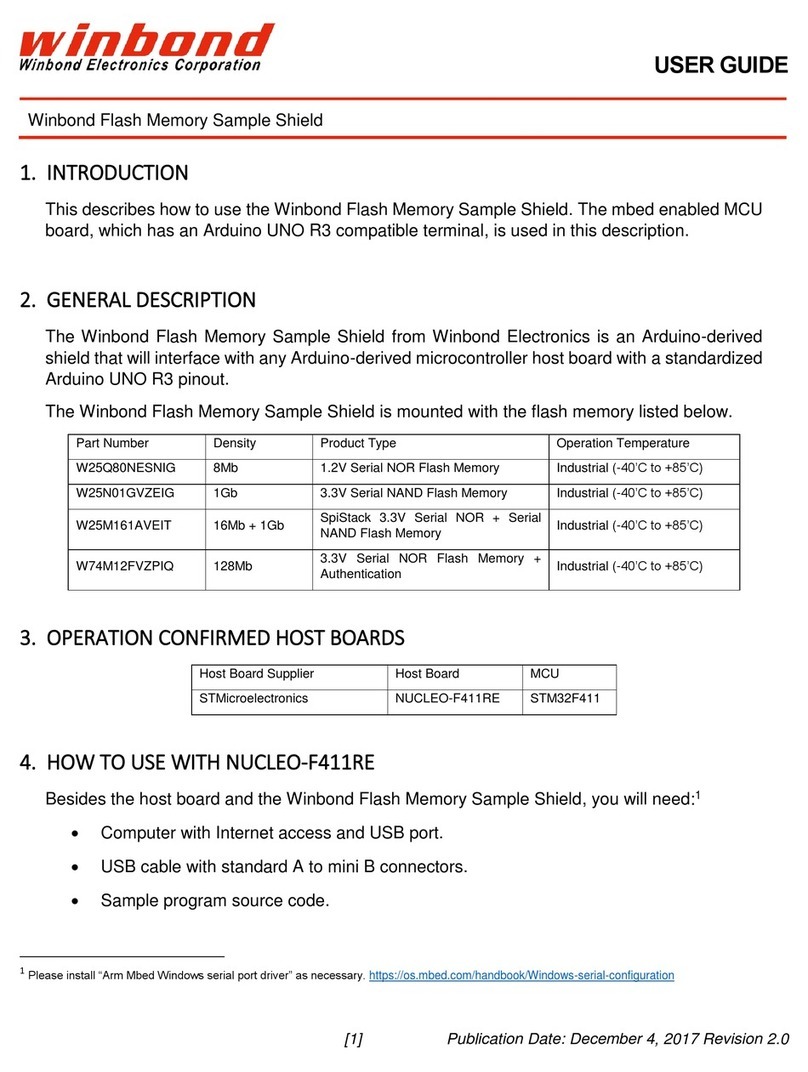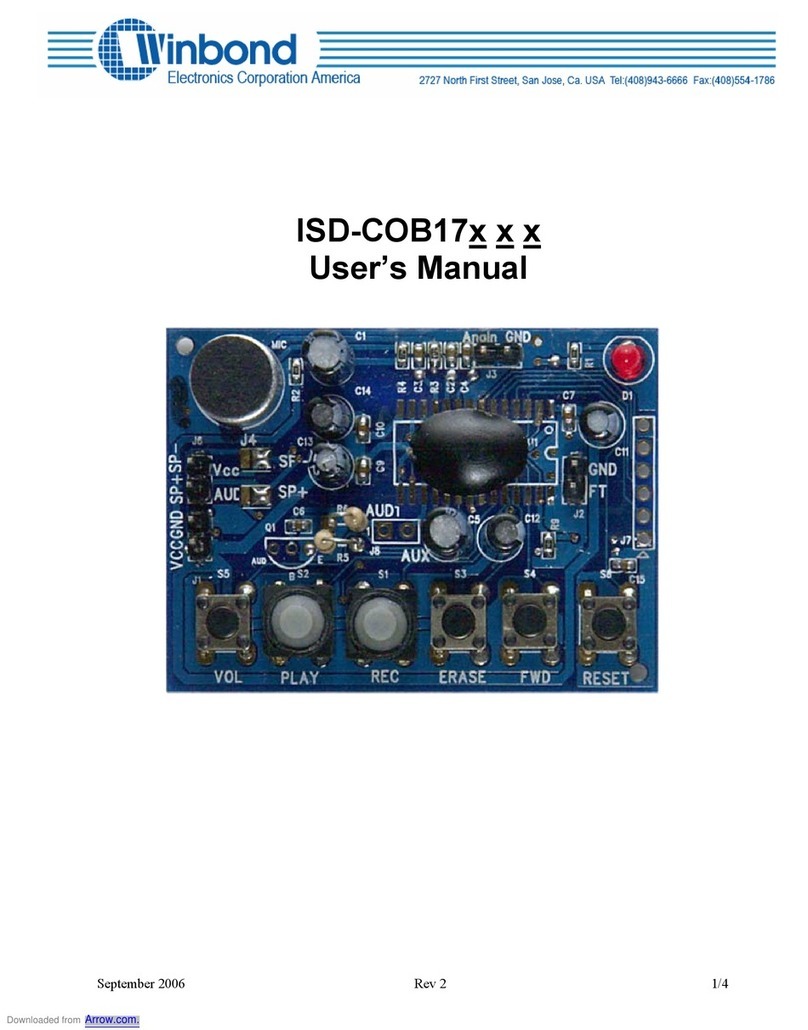
Preliminary W928C73
-8-
Descriptions Of Special Function Registers(SFRS)
ADDRESS
/NAME BIT BIT NAME R/W 10INITIAL FUNCTION
B7
R
1No use
B6 Key_2
R
1Key_2 input. A corresponding
key_INT(INT3_3) can be enabled.
B5 Key_1
R
1Key_1 input. A corresponding
key_INT(INT3_3) can be enabled.
B4 Key_0
R
1Key_0 input. A corresponding
key_INT(INT3_3) can be enabled.
B3 DEC_ADDT
RMatched Unmatched 1POCSAG address matched flag. A
corresponding INT(INT2) could be setup.
B2 F_ADR
W
1Flash ROM serial address output
B1 DEC_
SYNVAL
RSYNC Lost SYNC 1Decoder synchronization condition
80H/P0
B0 F_data
R/W
1Flash ROM data I/O
81H/SP B7~0 SP
R/W
00000111
Stack pointer address. Always points to
top of the stack.
82H/DPL B7~0 DPL
R/W
00000000
Low byte of 16 bit data pointer
83H/DPH B7~0 DPH
R/W
00000000
High byte of 16 bit data pointer
84H/DPL1 B7~0 DPL1
R/W
00000000
Low byte of 16 bit data pointer 1
85H/DPH1 B7~0 DPH1
R/W
00000000
High byte of 16 bit data pointer 1
86H/DPS B0 DPS.0
R/W Pointer 1
Pointer 0
0Selection of data pointer, B7~1 are not
used
B7 SMOD
0No use. Clear to “o”after power_on reset
B6 SMOD0
0No use. Clear to “o”after power_on reset
B5 -
0No use. Clear to “o”after power_on reset
B4 -
0No use. Clear to “o”after power_on reset
B3 GF1
0General purpose user defined flag
B2 GF0
0General purpose user defined flag
B1 PD
WEnable
Disable
0Power down mode enable bit. Set this bit
to “1”will stop the CPU and oscillation.
87H/PCON
B0IDL
WEnable
Disable
0Idle mode enable bit. Set this bit to “1”will
stop the CPU clock, but the oscillator keep
running.
B7 TF1
R/W Overflow
0Timer 1 overflow flag,. TF1 will
automatically clear after INT service
routine.
B6 TR1
WEnable
Disable
0Timer 1 enable
B5 TF0
R/W Overflow
0Timer 0 overflow flag, TF0 will
automatically clear after INT service
routine
B4 TR0
R/W Enable
Disable
0Timer 0 enable
88H/TCON
B3 IE1
(Bat_fail)
R/W INT
No INT
0Interrupt 1(battery fail INT) flag. Set by
hardware when a pre-selected INT level
(high or low) is detected on INT1. The INT
flag will keep only if the level is held.

































